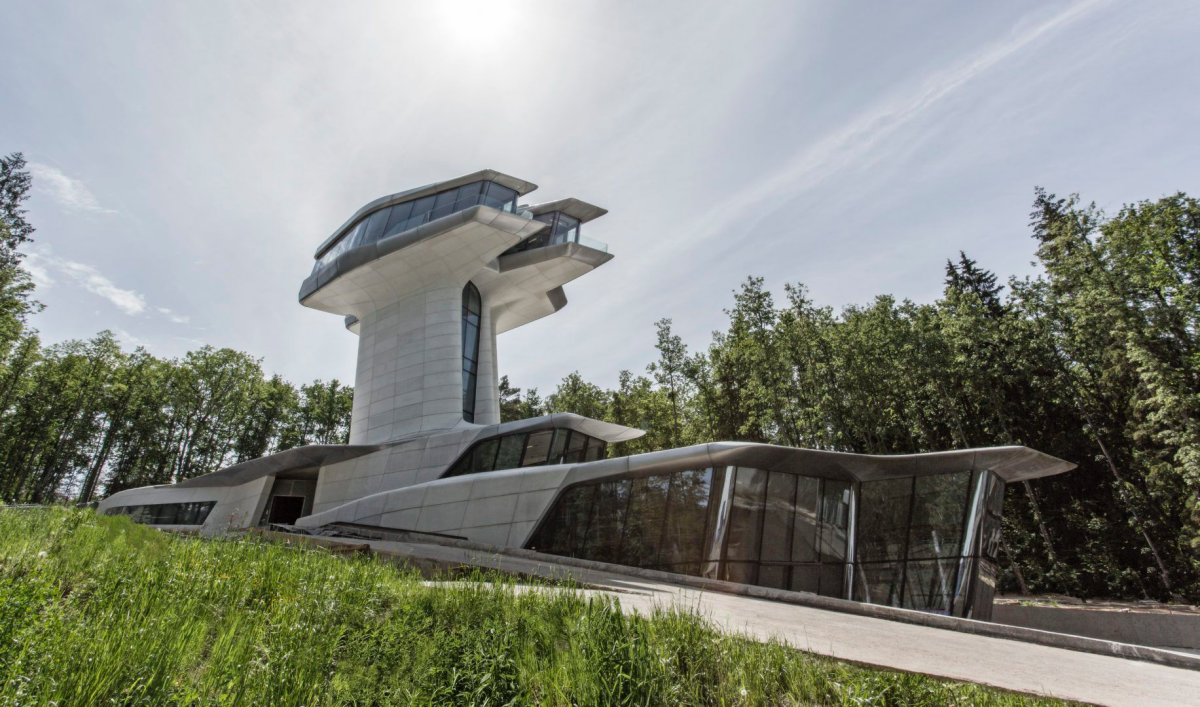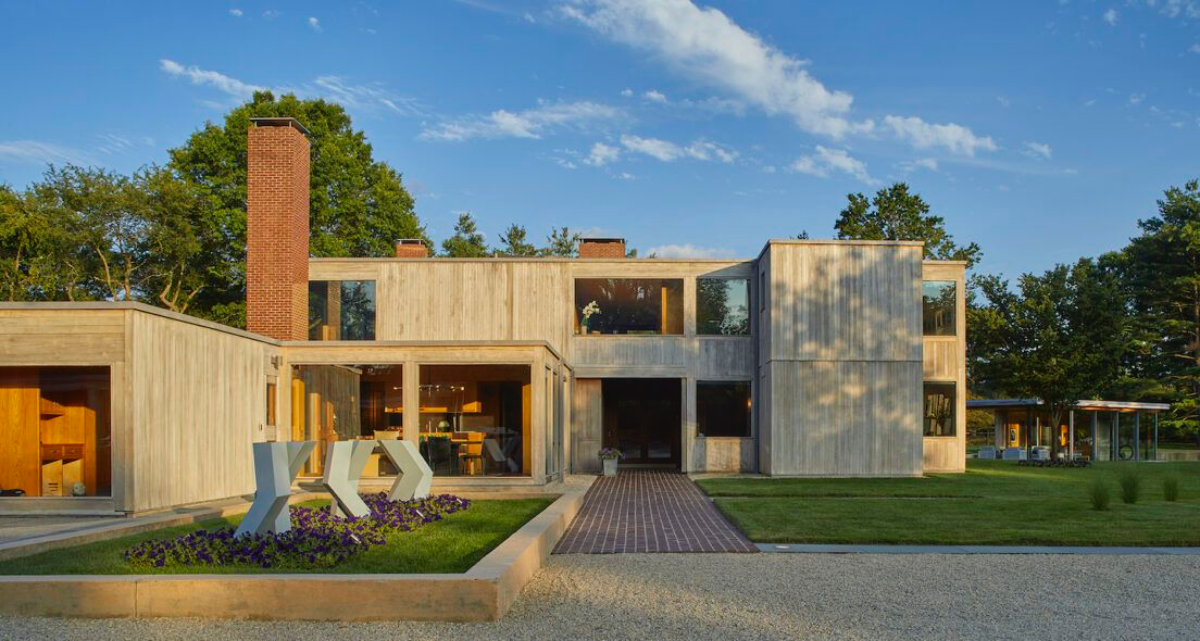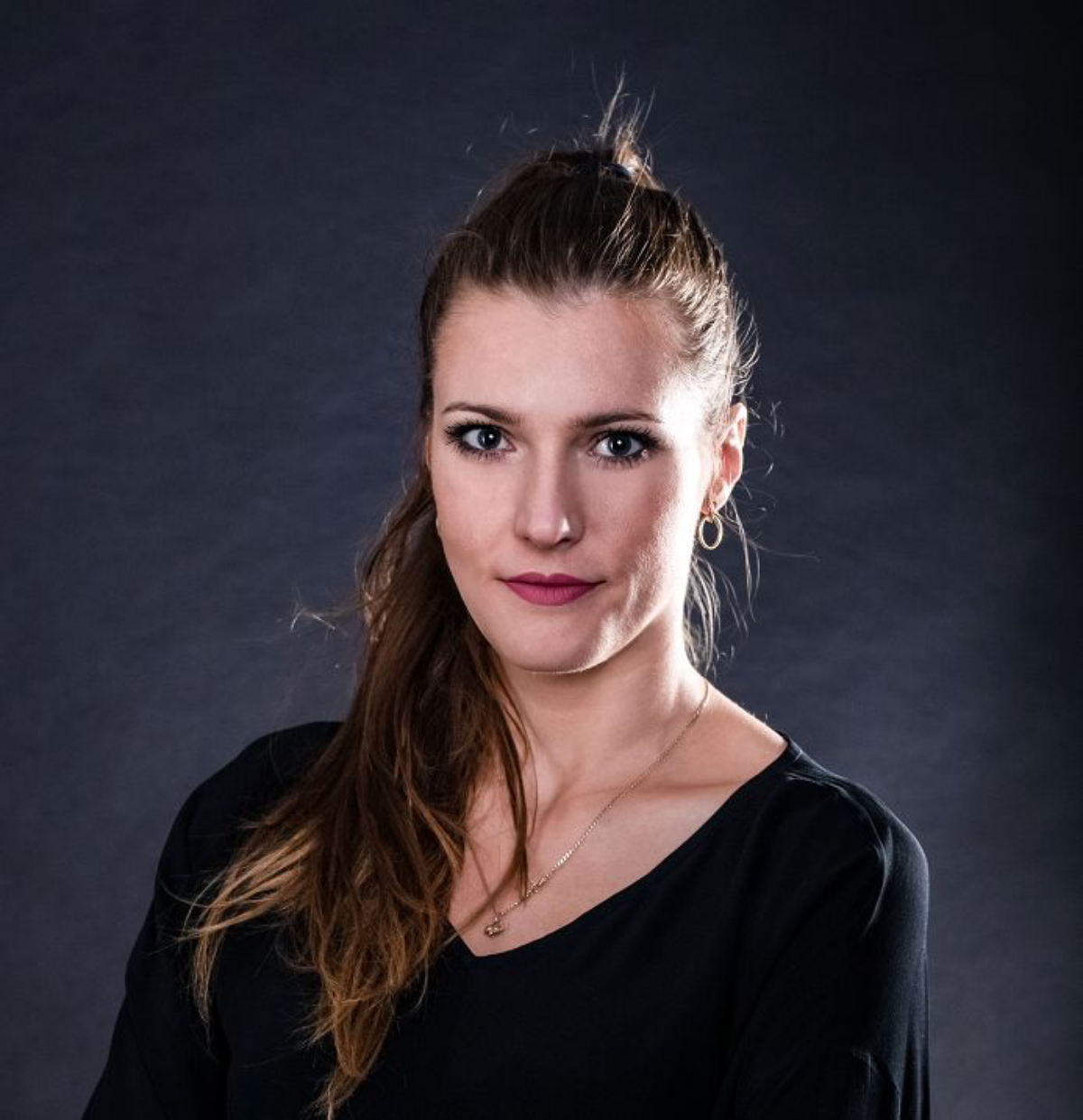Why Some Homes Just Feel *Right*: A Builder’s Guide to Lasting Design
I’ve been in the home building game for a long time now. Long enough to see a whole bunch of design trends come and go. Remember when every kitchen had those fussy, ornate cabinets? Yeah, me too. But some ideas don’t fade away. They have a certain weight to them, a substance that trendy styles just can’t match. These are the core principles that help us create homes that feel right, not just for today, but for decades to come.
In this article
Some of the most powerful concepts about how a building should function can be traced back to the great thinkers of modern architecture. These weren’t just designers; they were philosophers who asked really deep questions about what a space should be.
I first really ‘got it’ not from a book, but from walking through a masterfully designed public building on the West Coast. The way the sunlight played across the raw concrete walls was just… powerful. The whole place felt massive and important, yet at the same time, incredibly human. You could feel the intention behind every single joint and surface. It taught me that a building can speak. It has a language of materials, light, and purpose. And this isn’t just high-minded theory for fancy public works. It’s the very thing that separates a cookie-cutter house from a truly well-crafted home. My goal here isn’t to give you a history lesson, but to show you how these foundational ideas get put to work on real job sites, creating living spaces with real soul.

The Unseen Logic: How a Good Home Really Works
Great design is so much more than what you see on the surface. Honestly, it’s grounded in basic physics and a deep respect for human comfort. One of the most brilliant ideas I use on every single project is the concept of “servant and served” spaces. It’s a simple organizing principle that has a huge impact.
Think of it this way: the “served” spaces are where you live your life—the living room, bedrooms, dining room. These are the beautiful, open areas for you to enjoy. The “servant” spaces are all the things that make the house run: the stairwells, closets, ductwork, plumbing chases, and utility rooms. By smartly grouping these “servant” spaces together, often into a thicker ‘core’ wall or a dedicated zone, you accomplish a couple of amazing things. First, you get clean, uninterrupted living areas without awkward bulkheads or random closets breaking up the flow. Second, it makes building and maintenance a million times easier. All the pipes and wires are in logical, accessible zones. So, when a plumber needs to fix something down the road, they aren’t cutting into the drywall in the middle of your pristine living room wall. It’s a quiet, organizing skeleton that respects both the homeowner and the tradesperson who keeps the home running.

Let’s Talk About Light
Natural light is everything. A pioneering architect once said that a room isn’t a room without it, and I couldn’t agree more. But it’s not just about slapping a giant window in a wall. It’s about controlling the light—how it enters, where it lands, and how it changes the feel of a room throughout the day.
Before we even draw a single line of a floor plan, we study the sun’s path across the property. We use software (professionals use tools like Revit or SketchUp with solar plugins, but you can get a basic idea with an app like Sun Seeker on your phone) to model how the sun will hit the house in every season. It’s a game-changer.
For a home in a temperate climate, for instance, we might use big south-facing windows to capture that low winter sun for free heat. But to avoid baking in the summer, we’ll design deep roof overhangs—say, 24 to 36 inches—to block the high summer sun. This isn’t just for looks; it’s a climate-responsive strategy that has a real impact on your energy bills. We also think about the quality of the light. A small, high window can wash a wall with soft, indirect light, while a deeply recessed window can frame a view like a painting, creating deep shadows that give a room a wonderful sense of shelter and peace. Understanding how light behaves lets you paint with it.

A quick bit of homework for you: Try this today. Go outside and just look at your house at 9 AM, noon, and 4 PM. Notice where the light is hitting and where the shadows are. That’s your first step to understanding your own home’s relationship with the sun.
Letting Materials Do the Work
There’s a beautiful idea called “material honesty,” which simply means letting materials be themselves. Concrete should look and feel like concrete. Wood should show its grain and warmth. This taps directly into the physics of the materials, turning them into active participants in the home’s comfort.
A thick concrete or stone wall, for example, has high thermal mass. This means it absorbs and releases heat very slowly. In a desert climate, that wall can soak up the intense sun all day, and then slowly release that heat into the house during the cool night, keeping the temperature stable. The material is literally doing work for you. In a colder climate, an interior concrete floor can absorb heat from sunlight streaming in a window, then radiate that warmth back into the room as evening falls. When we leave these materials exposed, we’re not just making a style choice; we’re using their built-in properties to create a more comfortable and efficient home.

Behind the Scenes: What This Craftsmanship Actually Takes
Bringing these ideas to life is not your standard construction job. Every detail is on display, so there is absolutely no room for error. The skill of the builder becomes every bit as important as the vision of the designer.
Working with Architectural Concrete
When a client wants that beautiful, raw, board-formed concrete look, it’s a serious commitment. This isn’t your average foundation pour. The wooden forms themselves have to be built with the precision of high-end cabinetry. We specify the exact type of wood for the forms—often a clear-grain Douglas fir—to control the texture it leaves on the concrete. Even the pattern of the form-ties (the little metal rods that hold the forms together) is laid out on the plans, as their holes become a permanent part of the finished design.
Heads up, though: this is where the costs really differ. Be prepared for an architectural concrete wall to run you $150 to $250 per square foot of wall face. For comparison, a standard insulated wood-frame wall with drywall might cost between $25 and $40 per square foot. You’re paying for artistry and permanence. During the pour, the concrete has to be vibrated just right to avoid air pockets without causing the aggregate to separate. And if a section has a bad finish? You can’t just patch it; it will always look like a patch. The only real solution is to cut it out and re-pour it. It’s a commitment to perfection from day one.

The Art of the Connection
In a home built with this philosophy, the point where two different materials meet is a critical moment. How does a warm wood floor meet a cool stone wall? How does a sheet of glass sit inside a massive concrete opening? We can spend hours, even days, detailing these connections to make them look effortless.
For example, to get that clean, frameless look of glass set directly into a concrete wall, we often have to cast a specialized steel frame directly into the concrete during the pour. The glass is then installed into this hidden frame. It requires flawless coordination between the concrete crew, the steel fabricator, and the glazier. If one person is off by a quarter of an inch, a ten-thousand-dollar piece of custom glass simply won’t fit. We often build full-scale mockups of these complex details on-site before the real thing to work out the kinks. It’s an extra step that saves a world of headaches and money.
Making It Work Where You Live
Great principles are universal, but their application has to be tailored to the place. A design that’s perfect for the Arizona desert would be a miserable failure in Vermont.
In high desert and arid climates, the sun is the main challenge. Here, massive, protective forms make total sense. We use thick walls of rammed earth or insulated concrete forms (ICFs) for their thermal mass. Openings are smaller and deeply recessed to frame views without inviting brutal heat gain. Courtyards are a fantastic tool, creating shaded microclimates that cool the surrounding air.
For cold and snowy climates, the strategy flips. It’s all about embracing the sun, insulating like crazy, and managing heavy snow. We orient the main living spaces and largest windows to the south to maximize that free solar heat in the winter. The north side of the house gets fewer, smaller windows, acting as a buffer against cold winds. Triple-pane windows and meticulous air-sealing are non-negotiable.
By the way, you can easily compare roofing materials for your climate. Basic asphalt shingles are the cheapest up front, maybe $4-7 per square foot installed, but you’re replacing them in 15-20 years. A standing seam metal roof jumps to $12-$20 per square foot but will easily last over 50 years, which is great for shedding snow. Then you have timeless options like slate, which can last a century or more but will set you back $20-$40 per square foot. It’s always a trade-off between initial cost and long-term value.
And for coastal and humid regions, the enemies are moisture, salt, and wind. Material choices are everything. We use things that won’t rot or corrode, like concrete, glazed brick, and corrosion-resistant metals. Any wood has to be naturally tough, like teak or ipe. And most importantly, we design for airflow, creating cross-ventilation to keep things from getting damp and musty. Every window and door has to be engineered to withstand hurricane-force winds. It’s just part of the job.
How You Can Use This Thinking at Home
Okay, so this level of design is often associated with big-budget custom projects. But the thinking behind it can make any home better, whether you’re building new or just renovating your kitchen.
If you’re hiring a pro, communicate the feeling you want, not just a picture you saw online. Instead of saying, “I want this exact house,” try saying things like, “We want our home to feel peaceful and connected to the garden,” or “We really value natural light and want to use less energy.” This gives a good designer a much better starting point to apply these principles to your specific site and budget.
A lesser-known trick: you can still incorporate these ideas without a massive budget. Focus your investment on one or two key areas. Maybe you splurge on a beautiful stone fireplace that becomes the true heart of the home. Or you invest in one perfectly placed, high-quality window that frames an amazing view and transforms a room with light. It’s about being intentional.
When Things Go Wrong (And How to Avoid It)
Let me tell you, I learned a hard lesson about water early in my career. We had designed this beautiful, clean detail where a roof met a wall. On paper, it was perfect. But a year after the homeowners moved in, they had a persistent leak we just couldn’t trace. After several failed attempts to patch it, we had to open up the wall. We found that heavy, wind-driven rain was being forced up and over our flashing in a way the diagrams didn’t account for. The theory was right, but reality was messier. We had to completely redesign and rebuild it. It was a costly and humbling experience that taught me to always over-engineer our water management details. Always.
The Bottom Line: Safety and Finding the Right Team
I have to be very direct about this: the kind of work we’re talking about is not a DIY project. It requires a licensed team—an architect, a structural engineer, and a qualified general contractor. Period. The pressures involved in a large concrete pour are immense, and a formwork failure is incredibly dangerous. Every part of the structure must be engineered to meet or exceed local building codes, and you’ll need permits and inspections. This is all there to protect you. Trying to sidestep it is both illegal and just plain foolish.
So my final piece of advice is to invest in a good team. How do you find them? Start by looking at professional directories from architectural institutes. A great modern tool is to use specific keywords like “material honesty,” “craftsman-led design,” or “regional modernism” on design sites like Houzz to find pros whose work speaks to you. The relationship between you, your architect, and your builder is a long-term partnership. Find people who communicate well and share your values. A well-designed, well-built home is a legacy. It’s worth the effort to get it right.
Inspirational Gallery
Think about how a home greets you. A truly well-designed entrance often uses a trick of architecture: compression and release. A slightly lower ceiling or narrower entryway that suddenly opens up into a light-filled living space creates a subtle, satisfying drama. It’s a physical transition that signals you’ve arrived somewhere special, a refuge from the outside world.
Solid Core Doors: They feel substantial and block sound effectively, giving rooms a sense of privacy and quiet. The satisfying, low ‘thud’ they make when closing speaks to quality construction.
Hollow Core Doors: Light, inexpensive, and easy to install, but they can feel flimsy and do little to dampen noise between spaces, subtly undermining a home’s feeling of solidity.
For the rooms you live in most, the investment in solid doors, like those from a maker such as Trustile, pays off in daily sensory experience.
What’s the real secret to great natural light?
It’s not just about installing the biggest possible windows. It’s about variety and orientation. A masterful design balances different light sources. For instance, high clerestory windows can bring in soft, diffuse light without sacrificing privacy, while a carefully placed window can frame a specific view of a tree or the sky. It’s the interplay of direct sun, reflected light, and ambient glow that makes a room feel alive throughout the day.
A common mistake in modern open-plan homes is a failure of scale. A vast, open room with soaring ceilings can feel impressive but unlivable if not handled correctly. The solution lies in creating ‘rooms within a room’ through architectural elements—a dropped ceiling over a dining area, a change in floor material to define a cozy seating nook, or a freestanding fireplace. These elements provide psychological anchors, making the space feel both grand and intimate.
True long-term design embraces change, especially the graceful aging of materials. Instead of choosing finishes that will look worn out in a decade, select materials celebrated for their patina. Consider:
- Copper: Gradually transforms from a bright penny shine to a distinguished verdigris green.
- Unfinished Brass: Develops a warm, deep brown color with use.
- Slate: A natural stone for flooring or counters that wears its history beautifully.
- Vegetable-tanned leather: On pulls or banquettes, it darkens and softens with every touch.
- You move from room to room without ever feeling lost or blocked.
- Sightlines are long and clear, connecting different parts of the house.
- There are no awkward corners or dead-end hallways.
The reason? Meticulously planned circulation. A great floor plan establishes a primary ‘path’ through the home, often a central spine, from which all other spaces branch off. This creates an intuitive flow that makes living in the house effortless.
A 2015 study showed that office workers with views of natural elements like trees and water reported 15% higher levels of well-being.
This principle is fundamental to timeless home design. Long before the term ‘biophilia’ was trendy, good architects understood the deep human need for a connection to nature. This isn’t just about a picture window; it’s about designing courtyards, blurring indoor/outdoor lines with materials like stone that run from the patio into the living room, and orienting the home to track the sun’s path.
The Finnish architect Alvar Aalto was a master of what he called ‘human-centered modernism’. In his iconic Villa Mairea (1939), he wrapped structural steel columns in birch or rattan, softening their industrial feel. This simple act is a powerful lesson: even the most rational design should be tempered with natural textures and materials that feel good to the human hand and eye, bridging the gap between structure and soul.
Important point: When a budget is tight, invest in the ‘bones’ of the house, not the finishes. You can always upgrade a faucet or repaint a room later, but the fundamental structure is forever. Prioritize spending on high-quality windows from a brand like Marvin or Andersen, robust insulation that exceeds code, and a solid, well-built foundation and frame. These are the elements that create lasting comfort, efficiency, and value.










